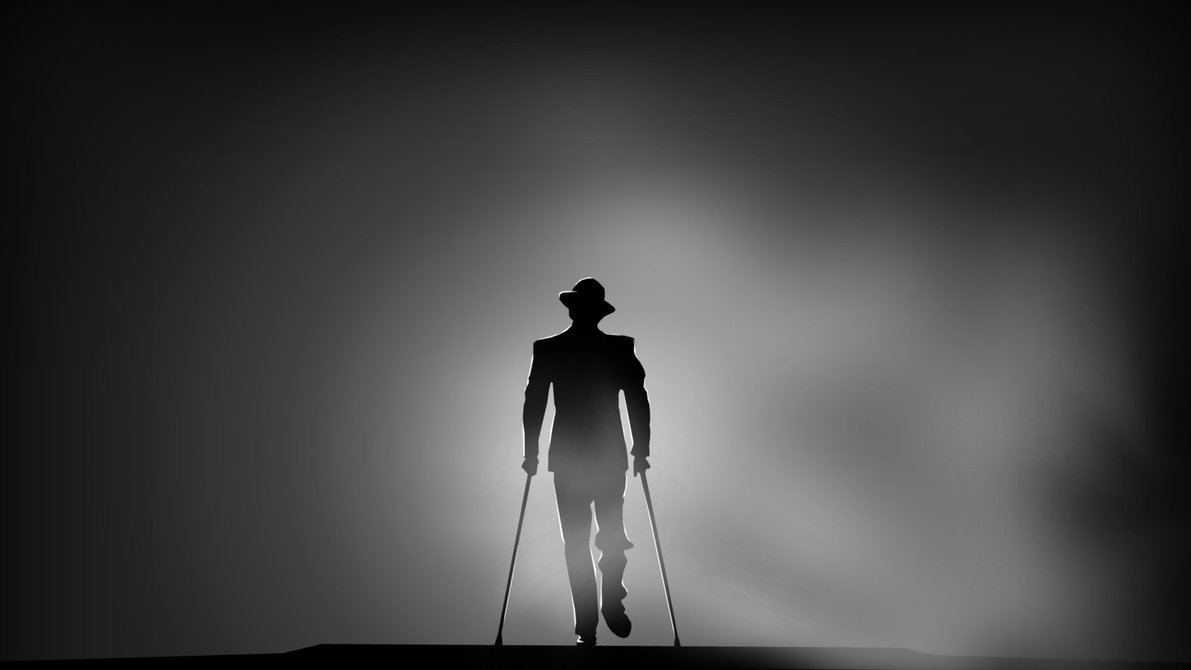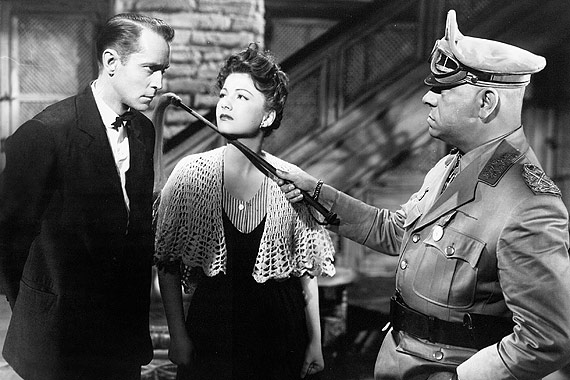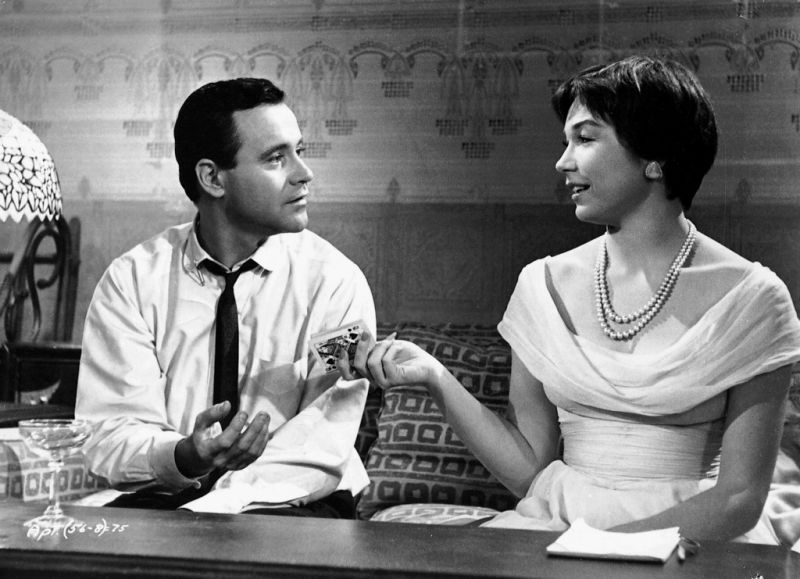4. Wilder’s contributions to Film Noir

When introducing someone to film noir, some of us almost, unconsciously mention a number of titles directing by Billy Wilder, with particular emphasis on “Double Indemnity” (1944) and “Sunset Boulevard” (1950). In fact, these films are considered the apotheosis of the sub Hollywood genre centred on hard boiled literature and detective tales.
In 1944’s “Double Indemnity” Wilder directs Fred MacMurray and Barbara Stanwyck in a story that revolves around Walter Neff, an insurance agent, who falls under the spell of a ‘femme fatalish’ house wife that convinces him into committing a crime in order to collect a handsome insurance policy.
Of the many reasons why “Double Indemnity” is considered a landmark in film noir, perhaps the most important is the fact that it introduces audiences for the first time to a really adult scenario that was too “avant-garde” for the promiscuous sensors of American cinema throughout this period.
It depicts visually and psychologically the power of sensuality, sex, hypocrisy and some other qualities existent in a given adult ‘forbidden’ relationship. This is perhaps the noir film that captures the most the essence of Raymond Chandler’s works which were often characterized by its ability to capture the real world and real people, its honesty towards the writer and its simplistic style.
The success of “Double Indemnity” was tremendous, it received seven Oscar nominations (Best picture, leading actress, director, writing, cinematography, sound recording and music) and it grossed over five million dollars in box office.
In 1950’s “Sunset Boulevard”, not only the ‘noirish’ atmosphere was maintained, capturing the essence of people, place and time, a deep reflection of the crude truth behind the filmmaking industry was exposed. The film revolves around an unemployed screenwriter, Joe Gillis, who accepts to write a comeback vehicle for a faded Hollywood star of the silent era, Norma Desmond.
The film explores a wide range of theme dichotomies such as illusion/truth, present/past, freedom/imprisonment, expression/silence, love/obsession. It was shot right in Hollywood, exposing its secrets, shady corners and moist rooms. It should be considered as the highest point in cynicism Wilder ever achieved in his career.
It also grossed five million dollars in box office and it received eleven Oscar nominations of which the film won three categories: best music, writing and art direction.
Also noteworthy, within Wilder’s noir efforts are: “The Lost Weekend” (1945), “Ace in the Hole” (1951) and “Witness for the Prosecution” (1957). Particularly interesting to watch is “The Lost Weekend”, a portrait of an alcoholic writer who battles against his addiction. Definitely, the best performance of Ray Milland’s career.
5. Wilder’s influence in the US cinematic war efforts

Due to the success achieved by his films in the 1940s, Billy Wilder can be perceived as a studio auteur, who managed to overcome the studio walls and its specific moral codes and regulations, adding his own persona and vision into his films. However, in the event of WWII, Wilder left Hollywood and remained very active in his adopted country’s war efforts (Wilder became an American citizen in 1934).
In 1945, Wilder worked for the PWD (Psychological Warfare Department) and directed the English language version of a documentary intended to educate German audiences of the barbarisms committed by their ruling regime. It was titled “Death Mills”.
However, even before 1945, Wilder had provided American theatres with an important piece reflecting on war and its atrocities, a film that has been overlooked by many when discussing about Billy Wilder’s career: “Five Graves of Cairo” (1943). Whose value has been greatly justified by Karen McNally’s words in “Billy Wilder, Movie-Maker: Critical on the Films”: “The confluence of unusual visuals, philosophical themes and character development in Five Grades of Cairo makes the film worthy of closer study. This is especially true of Wilder’s frequent use of disguise, concealment and outright falsehood in depicting the true nature of some of his leading characters.
«There are few life or death scenarios that prompt masquerade – but Five Graves of Cairo is one of them. In all of Wilder’s work, some sense of survival depends on disguise», notes Gerd Gemünden. He elaborates on that point by observing that in Wilder’s wartime-set films, impersonation is amplified because of the larger setting for “deception, espionage or counter-intelligence”.
6. Billy Wilder’s important role in the shaping of Post War American Cinema and in the birth of New Hollywood

In the post-war American cinema, comedy was one of the genres, along with war thrillers, that was widely used to depict the causes, the conflict and the consequences of war. However, it also brought to American screens other defining question on the new matured society of the 1950s, particularly the role of women and the change in heterosexual relationships. With those issues in mind a great number of post-war comedies depicted along with other themes, another kind of battle, the “battle of the sexes”.
And important within this context is “Foreign Affair” (1948), whose production resulted from an international collaboration between the Bureau of Motion Picture Affairs and the ever-powerful Erich Pommer. Shot in post-war divided Berlin, the film follows a love triangle established between an Iowan congresswoman (Jean Arthur), an American officer (John Lund) and a German cabaret singer (Marlene Dietrich).
The films central theme is quite clear: morale. However, Wilder, as only Wilder would do, decided to portray the lack of morale in both sides of the fence: Germans and Americans. Indeed, morality serves as the link between two distinctive worlds, the good-hearted Americans and the ‘putridness’ of Berlin residents, ultimately, showing that decency does not reside in anyone.
The importance of this film resides precisely in its faithful impartial voice that channels through a plot conceived to appeal the average American moviegoer, a reflection on the nature of this modern post-war world, therefore, surpassing the superficial dichotomy of good and evil to embody something bigger which has no frontiers or boundaries – human conscience.
From this film, some remarkable lines still echo the atmosphere of today’s world: “So you fly off back home. Wash your hands. Why, surely. You’ve got so much soap in the United States” or “If you give a hungry man a loaf of bread, that’s democracy, if you leave the wrapper on, that’s imperialism”.
Despite this information, Billy Wilder achieved yet other milestones in post-war American cinema, in some cases more important. Embarking into comedy after 1953’s “Stalag 17” – another remarkable cinematic achievement set in the crude environment of prisoner’s camps in WWII – the Austrian-born director worked on several successful titles such as “Sabrina” (1954), “The Seven Year Itch” (1955) – an important piece that reflects on the overrated role of sex in modern society –, “Love in the Afternoon” (1957) or “Some Like It Hot” (1959) before working on an import ‘comedy trilogy’ that focus on the cynicism, secrecy and greed in modern world’s economic and social organization in the new-born world.
This mentioned ‘comedy trilogy’ starts with “The Apartment” (1960) and moves forward with “One, Two, Three” (1961) and ends with “The Fortune Cookie” (1966). It portrays like Chandler’s works real life and real people and drives its comedy from the seriousness of the changes in this new American way of life.
It wasn’t about showing the hidden decay of pretend promiscuous American society; it was about showing a people that turned on itself, that tried to con itself, it was about showing this new openly attitude of getting advantage from the next-door neighbour without realizing that this advantage is a rather false one and that the neighbour and I are part of the same universe.
And this is somewhat the ideal that inspired the rise of a new Hollywood wave commonly known as “New Hollywood” which in a way mimics the trajectory of many of Wilder’s works in focus our attention in the hypocrisy of the American way of life of which problems – prostitution, alcoholism, vice, sex – started to be projected into screens and portrayed by new filmmakers.
Conclusion:
In the words of former MoMA’s Film library curator, Richard Griffith, “Whether his scene is the fleshpots of Long Island, the deceptive blandness of corporate life, or a desolate cave in a Western desert, there is visible behind his story-lines what has to be called a theme: the bewilderment of us all who, living in the midst of plenty and under the shadow of doomsday, must still make choices, and make them without guidance, flying blind.” This was Wilder’s style and its greatest contribution to us all.